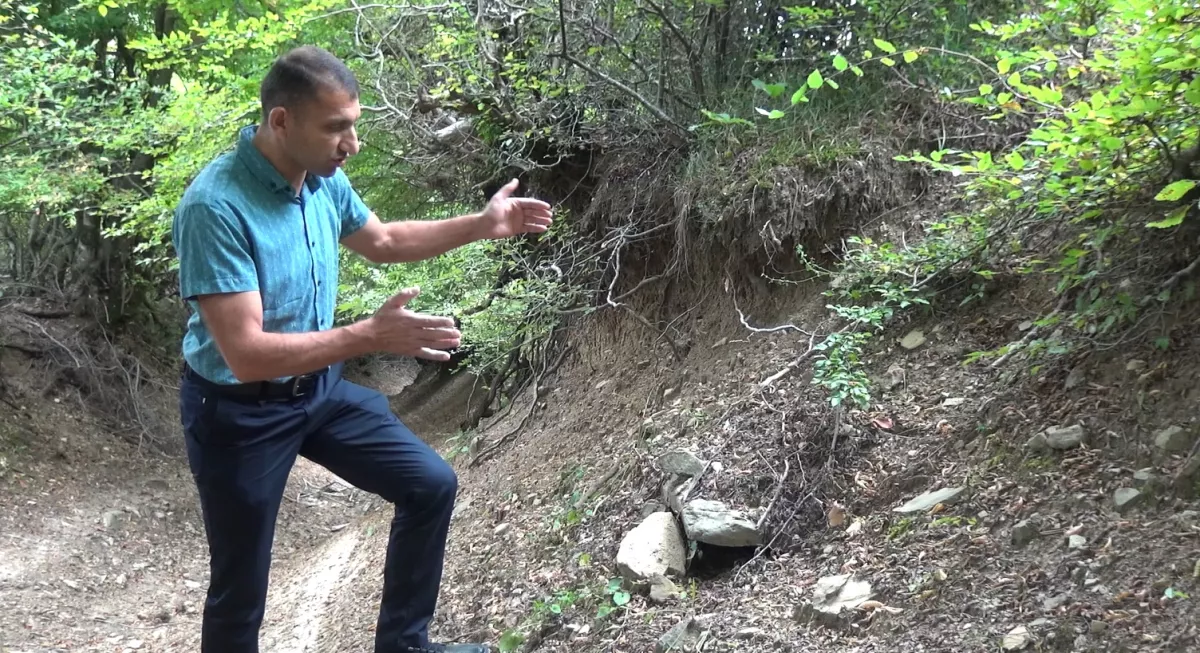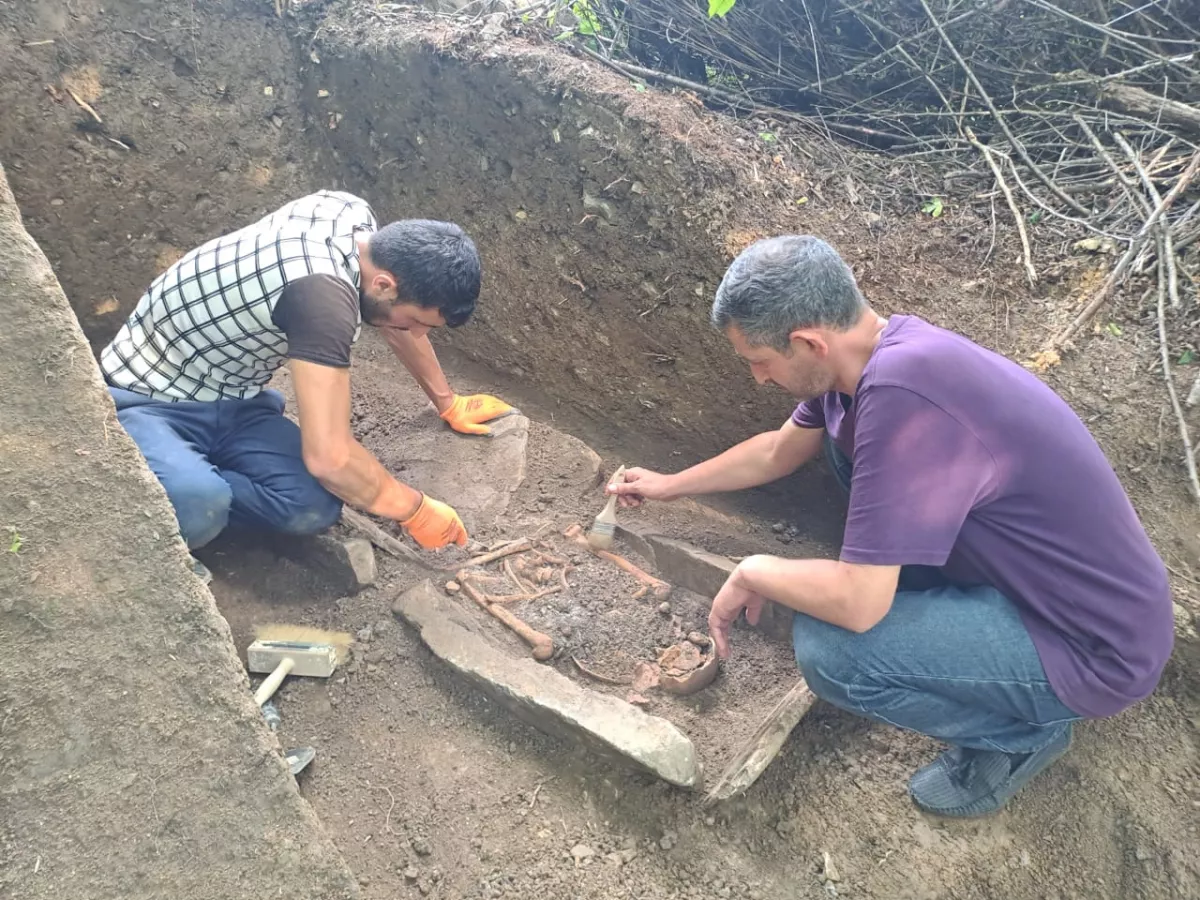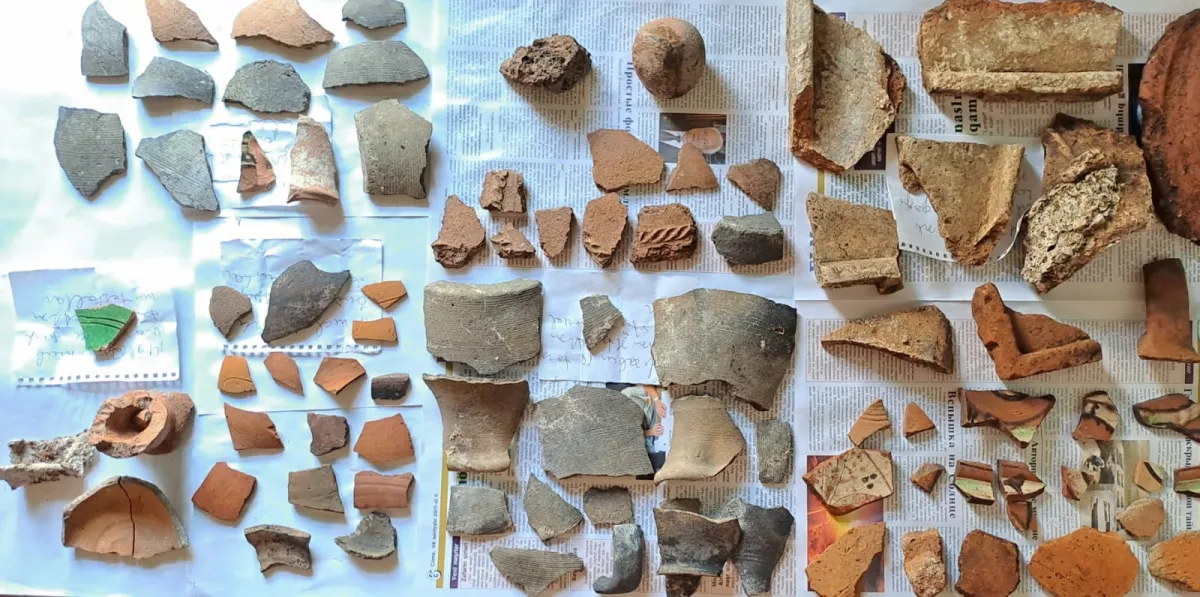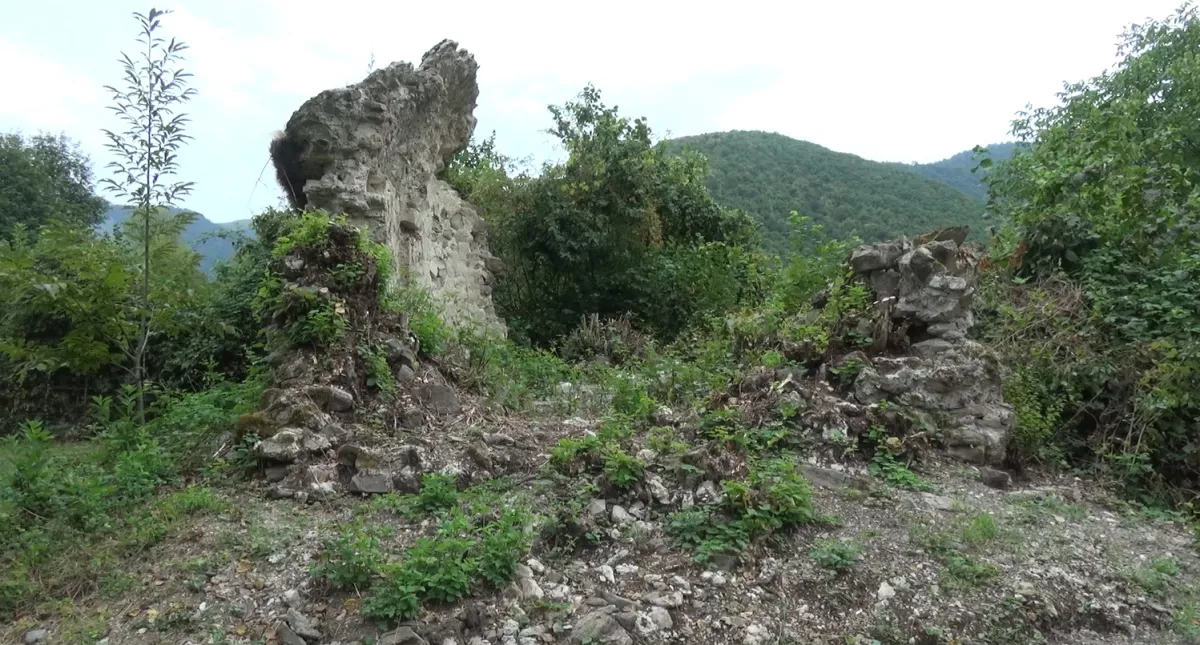Recent excavations unearth rich history of Azerbaijan's Bash Shabalid village Revealing ancient legacy
Archaeological expedition of the Sheki Regional Scientific Centre of the National Academy of Sciences of Azerbaijan has for the first time conducted archaeological excavations on the territory of remote Sheki village Bash Shabalid.
The excavations carried out in three different locations of the village revealed interesting historical facts, and material and cultural samples, Caliber.Az reports via Azertag.
Preliminary analysis of the identified artefacts gives grounds to assert that the history of Bash Shabalid village is older than it is commonly believed. An Azertag employee visited the village and the sites of archaeological excavations.

Bash Shabalid village, recognized as one of the oldest settlements in Sheki and the wider region, has long intrigued historians and archaeologists. The village is home to a Muslim cemetery dating back 300-400 years, a ruined Albanian temple with surviving fragments, and remnants of other ancient structures. These historical elements prompted the Regional Scientific Centre's archaeologists to conduct excavations, uncovering fascinating details from the ancient past.
The Gyurzan Gorge, a prominent feature of the village, was the first site to capture archaeologists' interest. Accessed via a mountain road, the gorge has been deepened over decades by floodwaters, leading to the erosion that revealed stone tombs.
Expedition leader Elshan Abdurakhmanov reported that the initial examination of these stone tombs was prompted by local residents' inquiries. Following this, researchers expanded their investigation to several other locations within the village.
The analysis revealed that the stone tombs date back to the VII-IX centuries and belonged to the ancient Albanians who once inhabited the area. Additionally, the artefacts and tombs discovered are linked to the ancient Yaloylutepi culture, indicating a continuous settlement in this region from ancient times.

The skeleton in the stone tomb found in the Gyurzan Gorge was buried according to Christian customs, with the head facing west and the feet facing east.
During the research conducted by the expedition in the territory called Ojagyany, various ceramic artefacts belonging to the ancient period and being samples of the Yaloylutepi culture were discovered. According to the head of the expedition, the found samples, including ceramic tripods, shards of jars and other materials contain information about the cultural development of that time.

Another site of archaeological research was the territory of an Albanian temple located in the eastern part of the village, on top of a hill. "As it turned out, this temple, built in the VI-VII centuries, was used until the XII century. In general, the research conducted in the village suggests that a permanent settlement existed here from the 3rd century BC, that is, from the period belonging to the Yaloylutepa culture, until the 12th century. Also in this area, we have found a large number of historical material and cultural samples, which are believed to belong to the ancient and early medieval history of Albania," said Elshan Abdurakhmanov, emphasising that extensive and long-term research is needed for a more complete and comprehensive study of the history and culture of this ancient settlement.









